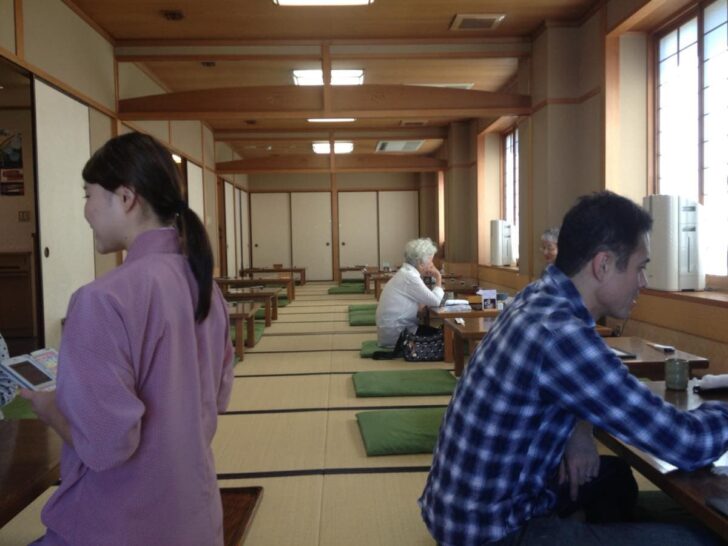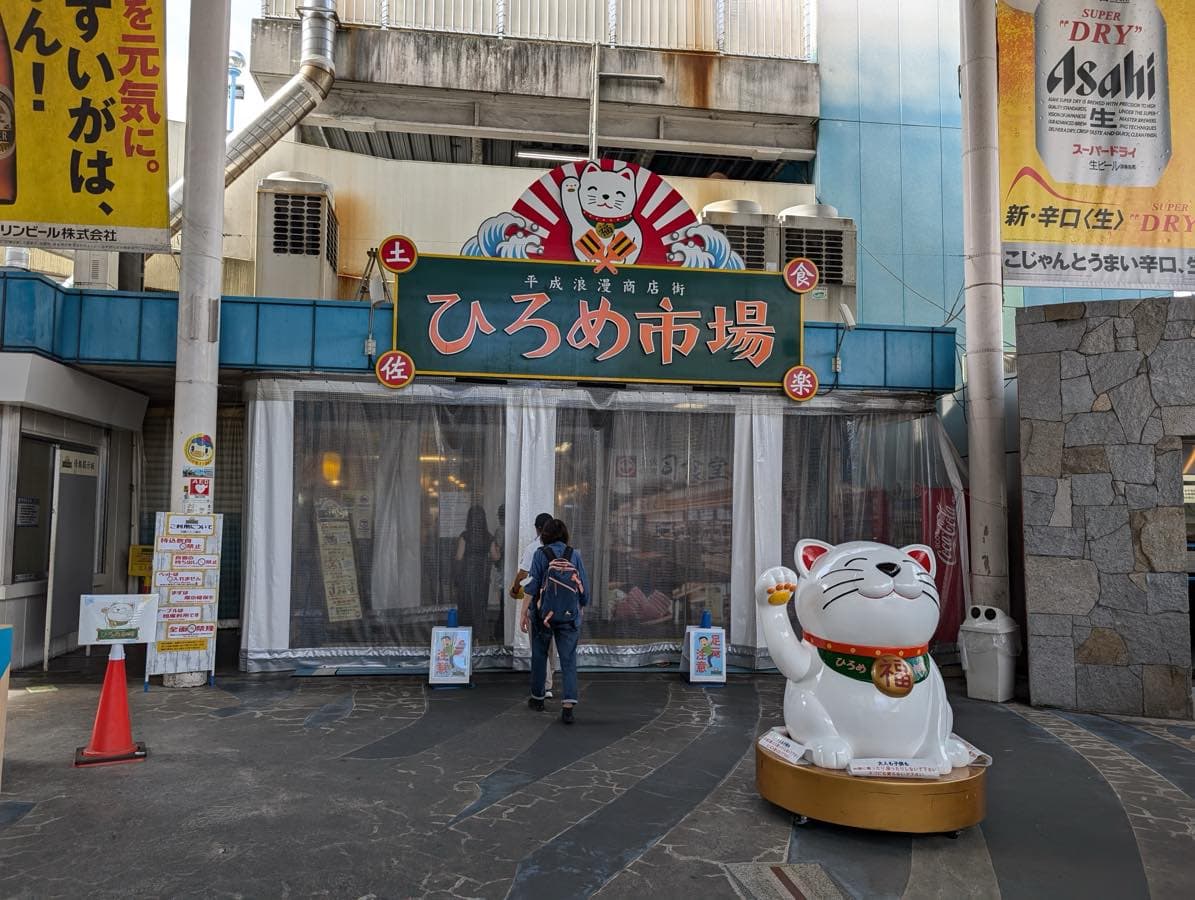Last weekend, I traveled to Nagoya.
Nagoya is known for its culinary delights like miso katsu, miso-nikomi udon, kishimen, and hitsumabushi.
However, among these, hitsumabushi was the only dish I hadn’t yet experienced authentically.
So, I asked a friend who lives in Nagoya to take me to the renowned hitsumabushi restaurant, Atsuta Horaiken!
Visiting the Famous Atsuta Horaiken Jingu Branch for Hitsumabushi
We initially aimed for the main branch in Atsuta, but it turned out we ended up at the Jingu branch instead. Oh well, no problem!
The restaurant’s traditional Japanese architecture was impressive.

The entrance: let’s step in.


We were seated in a tatami room on the second floor. Since we arrived just as the restaurant opened, it was relatively empty at first, but it quickly filled up.
According to my local friends, there’s almost always a queue at this restaurant. We got lucky!

Here’s the menu. While unagi dishes are the main attraction, they also serve sashimi, tempura, and other options. The hitsumabushi costs ¥3,100—a luxurious lunch indeed.
(at Sep 2012. Now 2024’s price is ¥4,400.)

The menu also explains how to enjoy hitsumabushi:
1. Divide the hitsumabushi into four portions.
– **First bowl:** Savor the unagi as it is.
– **Second bowl:** Add condiments (green onions, wasabi, and nori).
– **Third bowl:** Pour dashi broth over the unagi and condiments to make a type of ochazuke.
– **Fourth bowl:** Enjoy it in your favorite way.
What a brilliant idea—four delicious experiences in one meal!

Interestingly, the wine menu was given equal prominence as the unagi dishes. Perhaps this area is known for its wine?

A little while after ordering, the condiments (green onions, wasabi, and nori) arrived. Of course, they’re not much use on their own, so we waited a bit longer.

Hitsumabushi: Three Unique Ways to Enjoy Unagi Over Rice
Here it is—the hitsumabushi!
It’s served in a traditional wooden rice container (ohitsu) that exudes a sense of history.

Inside, the unagi and rice are densely packed…

…and it looks absolutely delicious!

It’s served with kimosui (a traditional clear soup with eel liver)—a perfect pairing for unagi.

Following the instructions on the menu, I divided the hitsumabushi into four sections.

**First bowl:** Enjoy the unagi as it is.
Pardon my poor presentation—it tastes much better than it looks in this photo!

The grilled unagi is incredibly flavorful, with a smoky aroma and savory tare sauce complementing the richness of the eel itself.
**Second bowl:** Add the condiments (green onions, nori, and wasabi).

The condiments enhance the flavor without overshadowing the original taste of the unagi.
**Third bowl:** Pour dashi broth over the unagi and condiments to create ochazuke.
This angle was surprisingly hard to photograph!

It looks appetizing—and it is!

The lighter flavor of the dashi makes for a refreshing finish compared to the previous rich servings. This version is delightful too.
**Fourth bowl:** I chose to revisit the second style, with condiments added.

This way, I could enjoy the unagi’s natural flavor alongside the balanced addition of condiments.
One of my friends preferred the first bowl style, as it lets you savor the pure taste of the unagi.
Enjoy Hitsumabushi in Three Ways at Atsuta Horaiken
The idea of discovering your favorite style and revisiting it at the end is truly clever.
While it’s a bit pricey for everyday dining, it’s a must-visit spot when hosting guests or sightseeing in Nagoya.
The flavor was exceptional, and I highly recommend it to anyone visiting Nagoya!



Comments